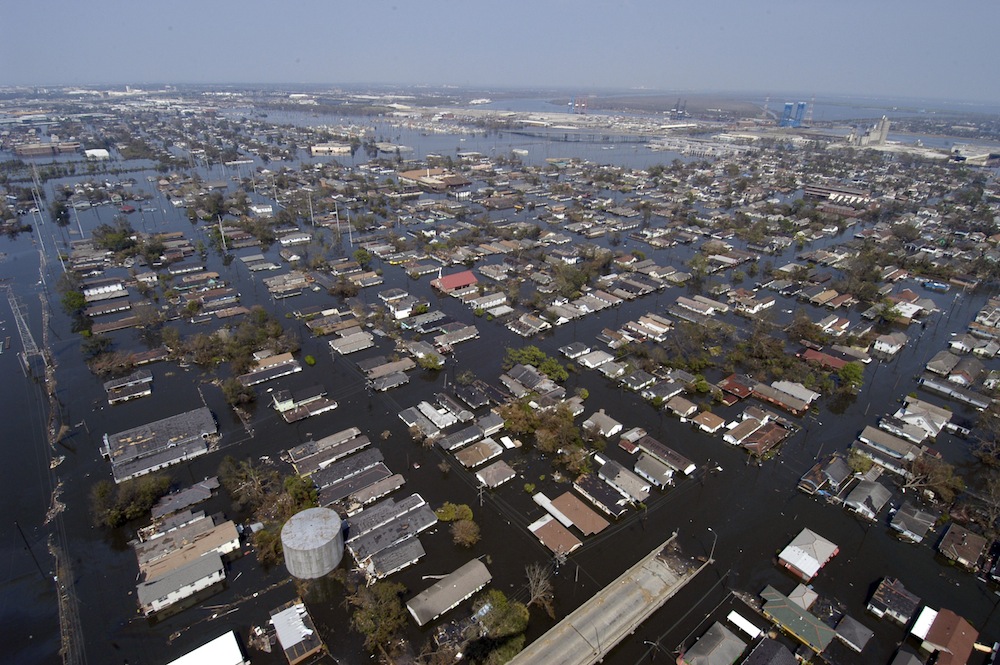New research by the Insurance Institute for Business & Home Safety (IBHS) indicates that stronger building standards and codes have contributed to stronger roofs in the Gulf Coast region.
In the 10 years after Katrina, Alabama, Louisiana and Mississippi, have also added tougher requirements for inspections, building permits, and contractor licensing. Combined with beefed up codes, this is good news for the resiliency of buildings in the region, IBHS says.
IBHS researchers examined changes specific to roofing requirements by evaluating and analyzing key aspects of roofing regulations, including codes, contractor licensing, permits, and inspections. Building codes have substantially improved, with 100% of surveyed jurisdictions currently enforcing either the 2012 or 2009 edition of the International Residential Code (IRC). Prior to Katrina, only about one-third (36%) of coastal communities surveyed were known to enforce the IRC.
In addition to enactment and enforcement of the latest building codes, IBHS recommendations for hurricane-exposed communities include adoption of IBHS FORTIFIED HomeTM–Hurricane superior roofing construction standards. These standards provide increased resilience through stronger construction techniques, and were specifically developed for these locations.
Related Stories
| Jan 4, 2013
Manchester, England building achieves highest BREEAM rating in U.K.
One Angel Square in Manchester, England, is the highest scoring outstanding building for the Building Research Establishment Environmental Assessment Method (BREEAM) in the U.K.
| Dec 27, 2012
Pentagon eases leasing standards established in 9/11 aftermath
The Pentagon has eliminated the stringent real estate leasing standards it put into place following the Sept. 11, 2001, terrorist attacks, reverting back to a version widely used by federal civilian agencies.
| Dec 27, 2012
Google provides USGBC with $3 million grant to transform building materials industry and indoor health
Google has contributed a $3 million grant to the U.S. Green Building Council (USGBC) to help transform the building materials industry and accelerate the creation of healthier indoor environments.
| Dec 27, 2012
Former industrial French city reshapes itself according to ambitious green standards
Nantes has a strong commitment to address challenges such as urban sprawl and carbon dioxide emissions.
| Dec 27, 2012
New York City law tracking building energy use yields surprises
A legally mandated report that tracks the energy use of New York City's largest buildings provides details about which buildings are achieving higher-than-expected energy efficiency, such as the Chrysler and Empire State buildings, as well as those that are performing poorly.
| Dec 27, 2012
New Jersey considers green roof mandate for state buildings
The New Jersey legislature is considering a bill that would require installation of green or blue roofs on state buildings that are at least 15,000 sf.
| Dec 20, 2012
AIA’s Healthier Communities Through Design showcases local policy initiatives
The American Institute of Architects released Local Leaders: Healthier Communities Through Design, a report that demonstrates the power of architecture to improve public health with policies that promote active living, accessibility, transit options, and better indoor air quality.
| Dec 20, 2012
China to build sustainable city for 180,000 from scratch
A 120-million sf urban development in China will be designed according to high green standards for about 180,000 residents.
| Dec 20, 2012
Air duct trade group urges maintenance, restoration professionals to avoid chemical cleaners
The National Air Duct Cleaners Association (NADCA) urges professionals to avoid using chemicals as a method for cleaning and maintaining air duct systems.















